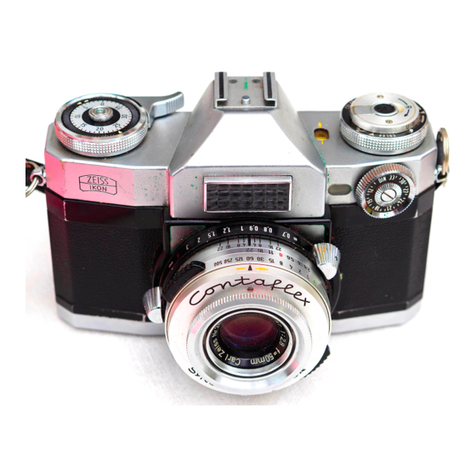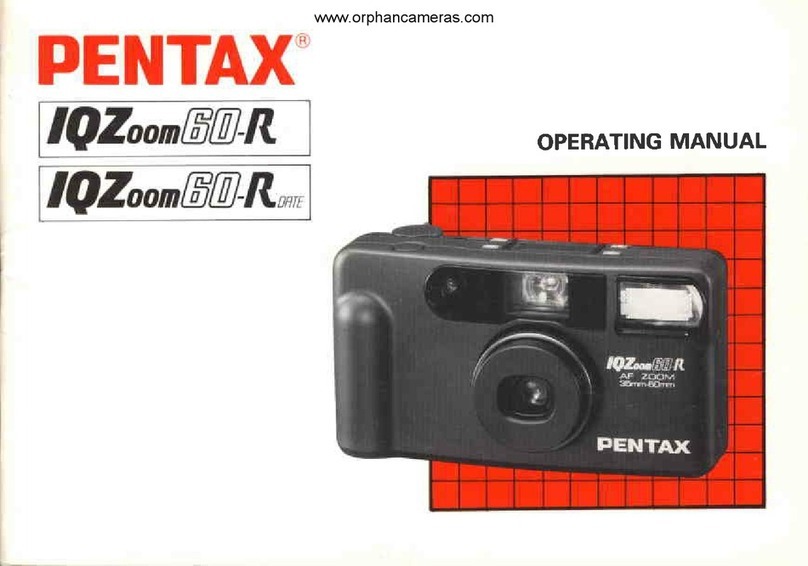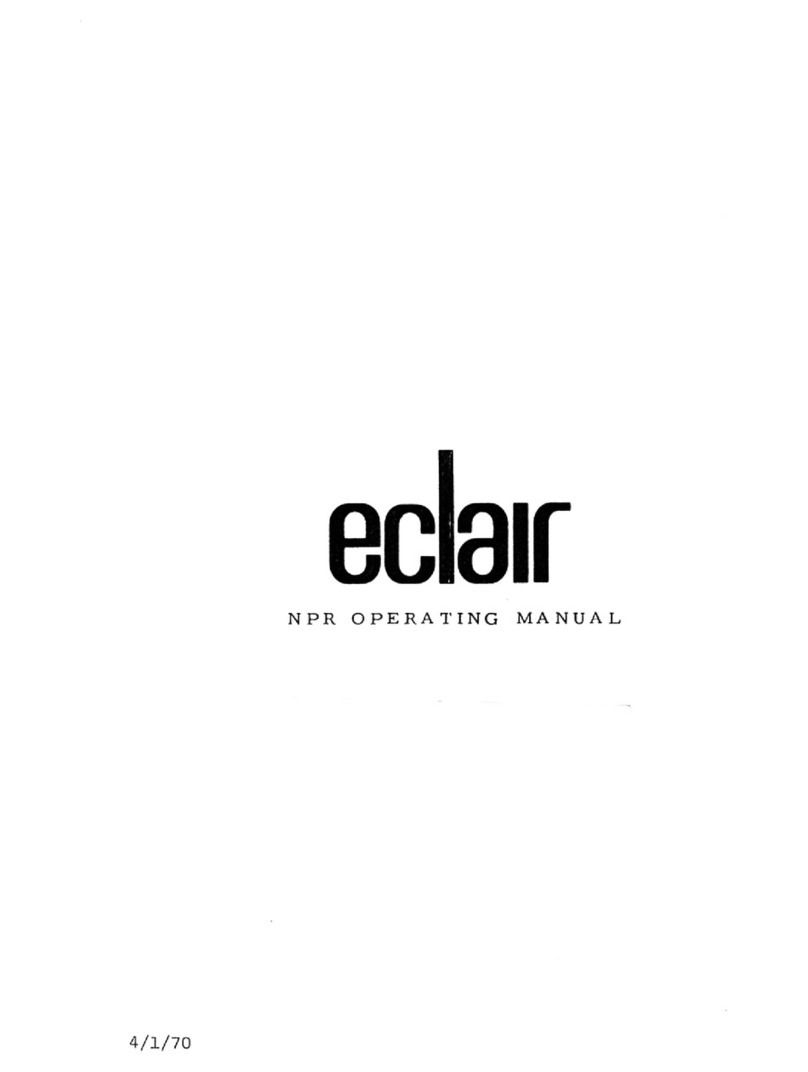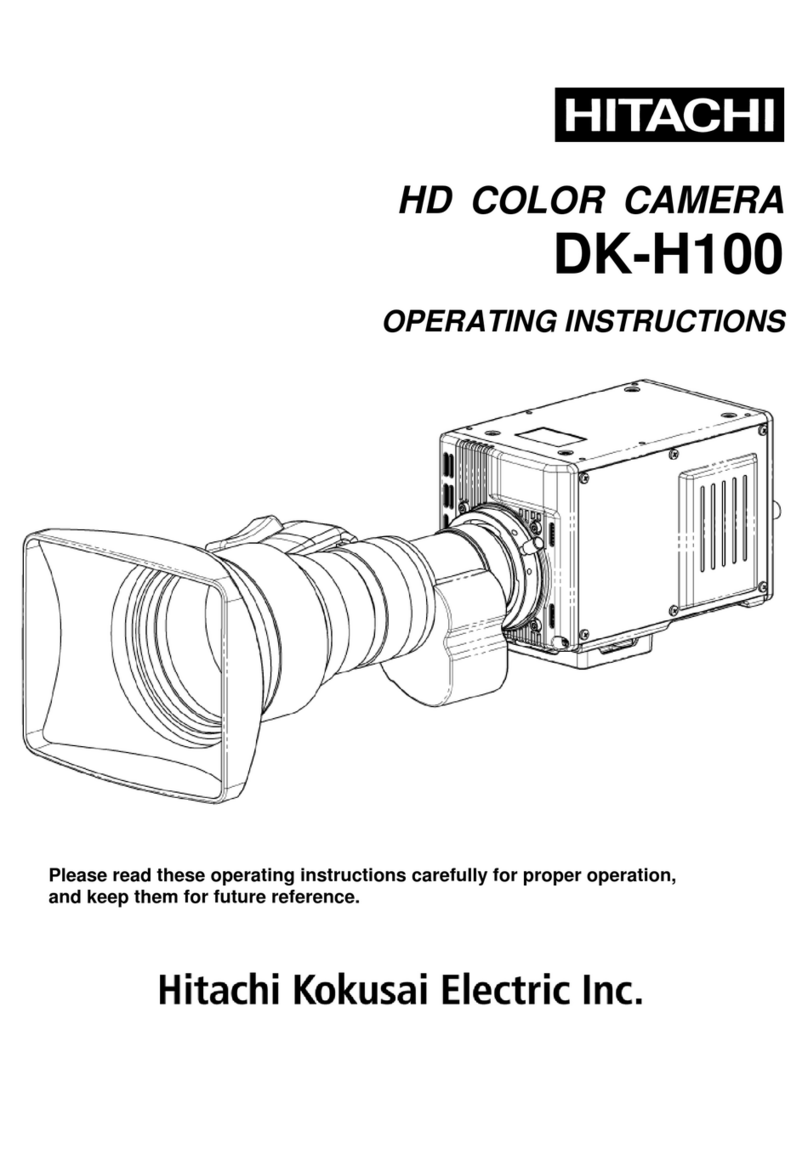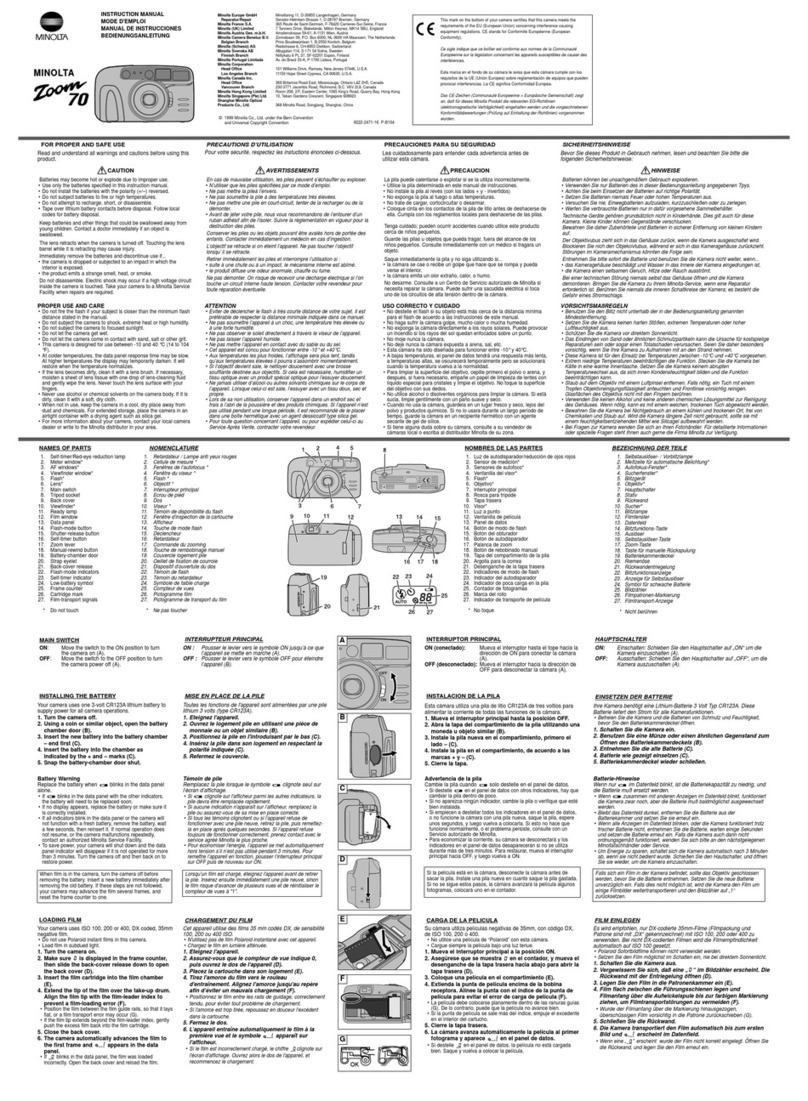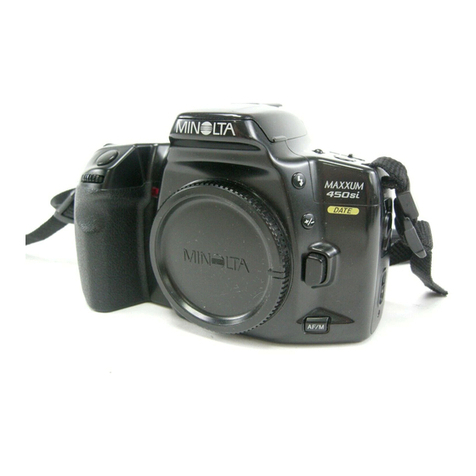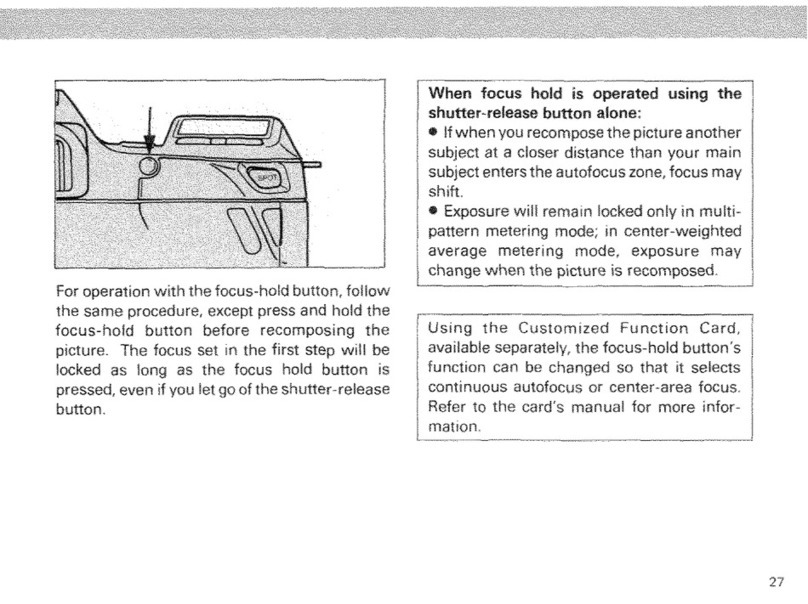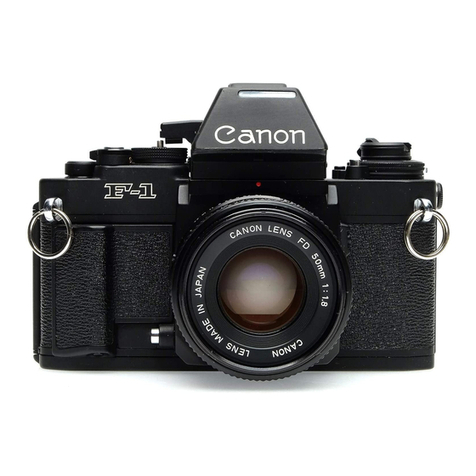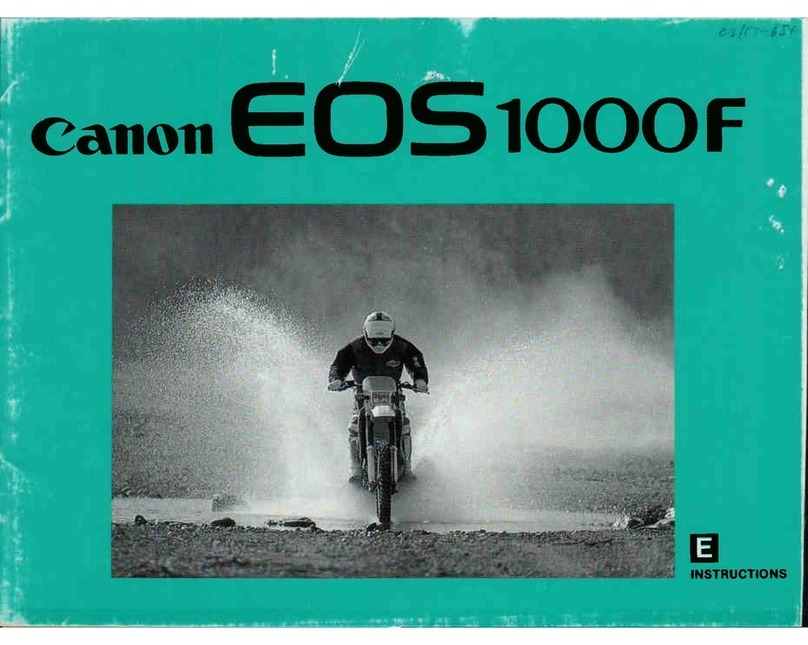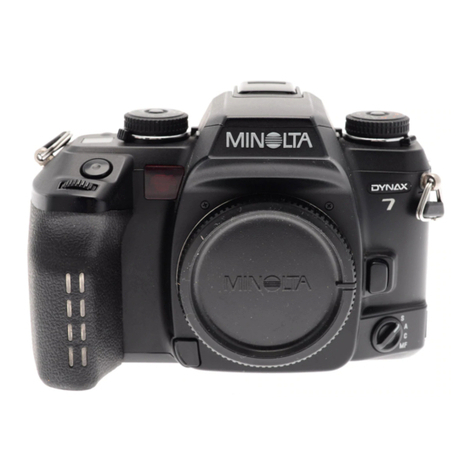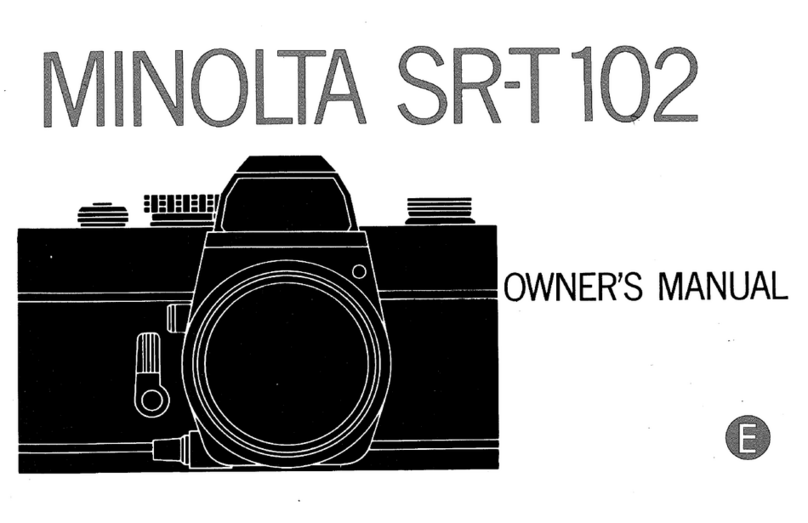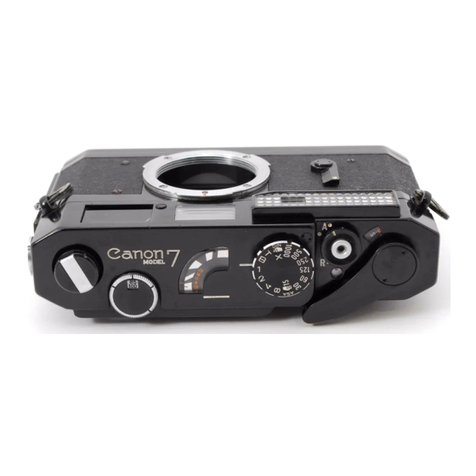
To measure
the exposure,hold the CONTINA LK up i
your eye as though to take a horizontal (landscape-
format) picture and point it towards the subject. At the
top of the viewfinder frame you will see the pointer of
the exposure meter. By adjusting the aperture setting
knobs2, it is possible to position the pointer so thatit
is exactly centred in the notch. This automaticallysets
the lens diaphragmto the correct aperture,which you can
read off (together with the pre-selected shu[ter speed)
from the bottom right-hand side of the viewfiAder frame.
lf you find it impossible
to line the pointer
up with'the
notch,then you should select a faster or slower shutter
speed accordingto the lighting conditions.
Pre-selecting the aperture. Under certain conditions it
may prove preferableto use a specific aperture setting.
Turn the setting knobs 2 so as to line up the desired
f/numberwith the setting mark 10.Once again, hold the
camera up to your eye in the horizontal position and
point it towards the subject.
The exposure meter pointer is then adjusted by turning
the shutter speed setting ring 6. lf the correct setting
should fall between two shutter-speed values on scale 9
(asyou can easily see whilst looking into the viewfinder),
then select the nearest marked shutter speed and re-
adjust the aperture by means of the setting knobs 2.
The exposuremeter is calibrated
against a standard and
under
the majority
of lightingconditionsit will indicatethe
correct exposure. Under certain circumstances - for ex-
ample when photographingopen landscapes with large
areasof sky and particularly
with back-lightedsubjects
-
incorrect exposures may result when the exposure meter
is used in the manner described above, since the very
muchlightersky area or the back lightingshininginto the
meterwill falsify the reading.ln situations
like these,it is
bestto tilt the cameradownwardsslightlysoasto measure
the foreground (only when taking the reading) or else to
2.
